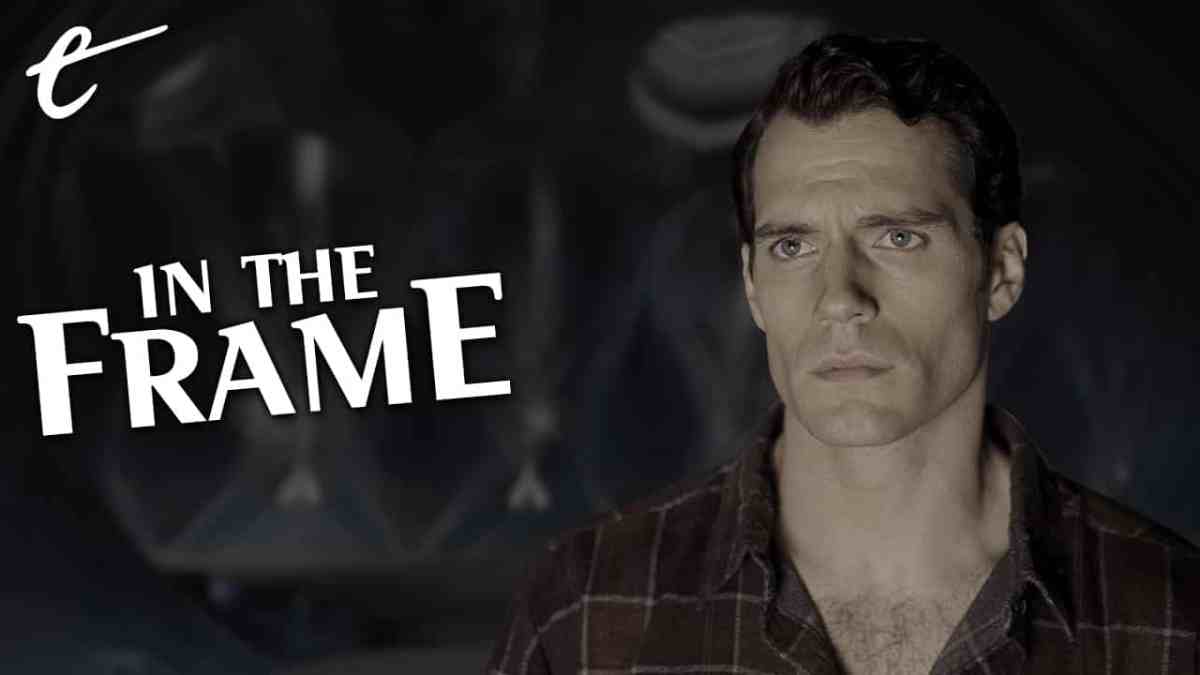One of the most interesting changes between the theatrical cut of Justice League and Zack Snyder’s Justice League is how the story approaches the character of Superman.
Both cuts of Justice League follow directly from the end of Batman v Superman, with the death of Superman (Henry Cavill) at the hands of the monstrous Doomsday. Zack Snyder’s Justice League opens by replaying the scene directly. As the opening credits play, Superman’s final breath echoes around the globe. The film focuses on the characters reacting to it: Lex Luthor (Jesse Eisenberg) in the Kryptonian ship, Mera (Amber Heard) in Atlantis, Hippolyta (Connie Nielsen) in Themyscira.
In both cuts, Superman’s death leaves a mark on the world; his monument in Metropolis is preserved in shards, and Tower Bridge is draped in the iconic “S” shield. In both cuts, Superman’s death is a motivating factor for Bruce Wayne (Ben Affleck) in his efforts to assemble a team of metahumans to protect the planet from a monstrous threat predicted by Luthor. In both cuts, Superman is ultimately resurrected by that team and joins the climactic battle against the evil Steppenwolf (Ciarán Hinds).
However, the two cuts of Justice League diverge significantly in their approach to the character of Superman. Joss Whedon’s Justice League is focused on the character of Superman himself as an institution. Many of Whedon’s reshoots focused on Cavill, leading to the monstrous attempts to digitally erase his contractually protected moustache from Mission: Impossible – Fallout. While Whedon cut the film down to a tight two hours, he consciously bulked up Superman’s screen time.

Whedon’s cut of Justice League opens with a hideous and corny video interview with Superman, foregrounding him as a central character. Later, Whedon suggests that Superman renders the rest of the team redundant. Superman can fly as fast as the Flash (Ezra Miller) runs. When the Flash saves a single family, Superman saves an entire building as a background gag. When Cyborg (Ray Fisher) struggles to separate the Mother Boxes, Superman arrives to handily rip them apart.
Whedon’s cut basks in the classic iconography of Superman. Snyder had originally planned for Superman to appear in the black costume that the character wore after his death in the comics, but Whedon opted for the traditional red and blue look. “It seemed that a more positive, upbeat image of Superman was what was needed,” explained costume designer Michael Wilkinson, “the idea of hope and that the world could in fact be saved was important, so that’s the direction that we went.”
Similarly, Danny Elfman’s soundtrack makes sure to quote from John Williams’ classic score to Richard Donner’s Superman, which is perhaps still the defining live-action adaptation of the character four decades later. Elfman justified this decision as an appeal to nostalgia, “The people at DC are starting to understand we’ve got these iconic bits from our past and that’s part of us, that’s part of our heritage — we shouldn’t run away from that.”
Some traditionalist fans complained that the Superman introduced in Man of Steel and developed in Batman v Superman was “not really Superman” or even “a deliberate trashing of the character of Superman.” In many ways, Whedon’s alterations to the theatrical cut of Justice League feel like a concession to these fans. Much like how Star Wars: The Rise of Skywalker approached its older characters, Whedon tried to assure those fans that their take on Superman was still the most important.

In contrast, Zack Snyder’s Justice League offers a more nuanced and more sophisticated understanding of the Man of Steel, offering a celebration of Superman less rooted in transparent and pandering nostalgia. After all, Man of Steel had largely been an exploration of why the tropes of classic Superman movies couldn’t be ported into a post-9/11 world, while Justice League was a deliberate reconstruction of these heroes by embracing their mythic and transcendental status.
Zack Snyder’s Justice League understands that Superman is a symbol and an idea, and that he works best in that context. After all, while there’s some debate about whether he was technically the first superhero, Superman codified the superhero genre. All modern superheroes can trace their lineage back to him. As the graffiti on the memorial at the end Batman v Superman reminds audiences, “If you seek his monument, look around you.”
Even though he dies at the end of Batman v Superman, Superman still wins an important moral victory: He redeems Bruce Wayne’s faith in humanity. It’s revealing that Superman is a clear inspiration and influence on the team that Bruce assembles in Zack Snyder’s Justice League. “He was my hero,” the Flash concedes as he exhumes Superman’s body. Bruce repeatedly talks to Alfred (Jeremy Irons) about his newfound belief in something beyond the material world, inspired by Superman.
Each of the new members of the team reflects some facet of Superman back at him. The Flash has tremendous power and moves through the human world but seems unsure of how to relate to other people. “I need friends,” he confesses to Bruce. Barry Allen is awkward and uncomfortable interacting with other human beings. During his introductory action set piece, Snyder demonstrates how fragile and strange the material world must appear to Barry Allen, as the hero intervenes to prevent a horrific car accident.

It’s a scene that mirrors an early use of Superman’s powers in Man of Steel to save a bus. Much like Man of Steel continually demonstrates how alien Earth must seem to a being with the powers of Superman, Justice League suggests something similar in relation to the Flash’s ability to slow down and distort time. And much like Man of Steel ends with Clark getting a job at the Daily Planet, Justice League ends with Flash getting a job at Central City Crime Lab. He is now part of the world.
The parallels are more pronounced with Aquaman (Jason Momoa). Much like Superman is a child of two worlds, caught between Krypton and Earth, Aquaman is trapped between Atlantis and the surface world. And much like Man of Steel suggested that General Zod (Michael Shannon) sought to turn Krypton into a fascist dictatorship, there are similar suggestions in Justice League that King Orm (Patrick Wilson) is attempting something similar in Atlantis.
Aquaman’s arc in Justice League is about coming to understand the obligations that he has, the responsibility that comes with great power. When Bruce initially tries to recruit Aquaman to the team, Aquaman refuses. “I wanna be left alone,” he insists. “I don’t owe anyone anything.” It’s similar to Superman’s arc in Man of Steel, having to “take a leap of faith” and decide that the human world is worth fighting for. Aquaman eventually makes that same leap.
However, the parallels are most strongly pronounced with Cyborg, the character who most benefits from the expanded runtime and shift in focus. Cyborg is also the character who is most explicitly positioned as a spiritual successor to Superman. He is the “next generation” of superhero. As Richard Newby pointed out, it is Cyborg who gets the big traditional superhero introductory sequence in Justice League, learning to fly like Superman in Man of Steel. Both Cyborg and Superman are resurrected by Mother Boxes.

If Superman’s relationship with his fathers Jor-El (Russell Crowe) and Jonathan Kent (Kevin Costner) provided the central arc of Man of Steel, Justice League is rooted in the relationship between Cyborg and his father Silas Stone (Joe Morton). If Man of Steel suggested that Superman was a child of two worlds, then Silas is explicitly positioned as “a father twice over.” Even Silas’ final scene in Justice League is shot to evoke that of Jonathan Kent in Man of Steel, calm in the face of death.
Crucially, Cyborg is presented as the next logical evolution of Superman. In Man of Steel, Superman served as a bridge between the old world and the new world, with Krypton presented as a corrupted version of Europe succumbing to fascism casting Superman as a refugee to the New World. In Justice League, Cyborg exists as a bridge from the material world into a new digital frontier. Silas’ monologue suggests that his son is just as much of a game changer, if not more so, than the Last Son of Krypton.
Indeed, it’s telling that Cyborg gets the DCEU’s signature climactic scene in Justice League. In both Man of Steel and Wonder Woman, the protagonists are confronted by an enemy that offers to remake this “fallen” world in the image of a nostalgic paradise. In Man of Steel, Zod tempts Superman with the resurrection of Krypton. In Wonder Woman, Ares (David Thewlis) tries to tempt Diana (Gal Gadot) with plans to restore the world to the paradise that it was before mankind sullied it.
It’s a classic mythic moment — it’s Satan tempting Christ in the desert. In Justice League, Cyborg is tempted like Superman was in Man of Steel. As he attempts to interface with the Mother Box, he is offered the promise of a humbler sort of nostalgia, a restoration of his life before the accident that transformed him into a fusion of man and machine. Naturally, Cyborg rejects this invitation to retreat into memory and fantasy. In doing so, he embraces the future.

Zack Snyder’s Justice League suggests that this is the true power of Superman, acting as an inspiration to and springboard for a new generation of heroes. Fans have noticed Snyder’s cut features an appreciably more diverse cast than the theatrical cut, literalizing Superman’s status as a metaphorical minority character. Even Barry Allen’s description of himself as “a very attractive Jewish boy” evokes the popular reading of Superman as a uniquely Jewish character.
There is a lot of discussion about the potential future of Superman as a character. There are currently rumors that producer J.J. Abrams and writer Ta-Nehisi Coates are working on an iteration of Superman that might cast a black man in the lead. In some ways, this feels like a logical extension of the way that Zack Snyder’s Justice League approaches Superman, embracing him as a source of inspiration for a generation of new and more diverse heroes following his example.
Joss Whedon’s theatrical cut of Justice League offers its audience reheated leftovers of an iconic portrayal of the Man of Steel, a hollow invocation of a beloved take. It attempted to reassure viewers that Superman was as strong or as fast as any of the heroes that followed him. However, as Silas narrates in the film’s final act, “The world is not fixed in the past, but the future.” Zack Snyder’s Justice League understands that Superman’s real strength is as an idea and an inspiration — not what was, but what could yet be.







Published: Mar 22, 2021 11:00 am